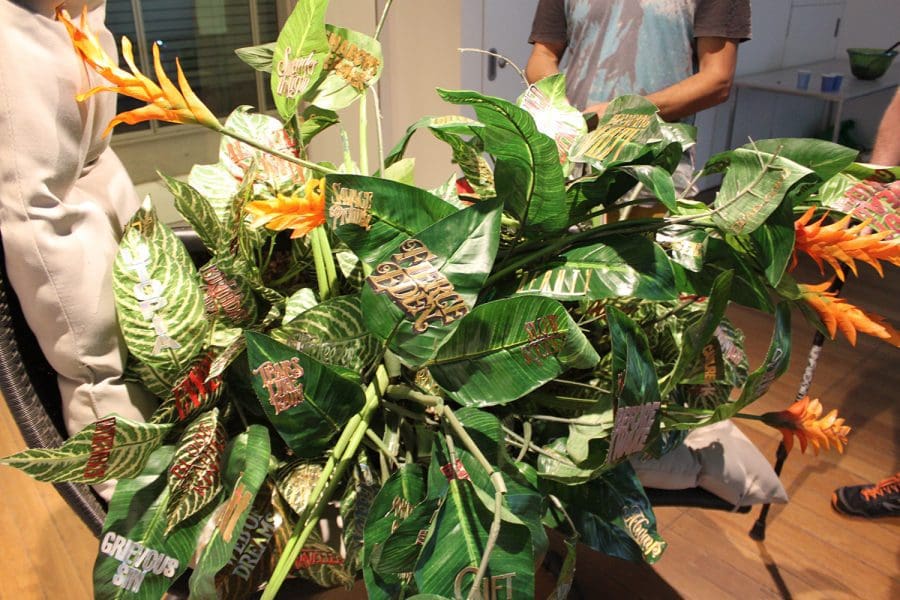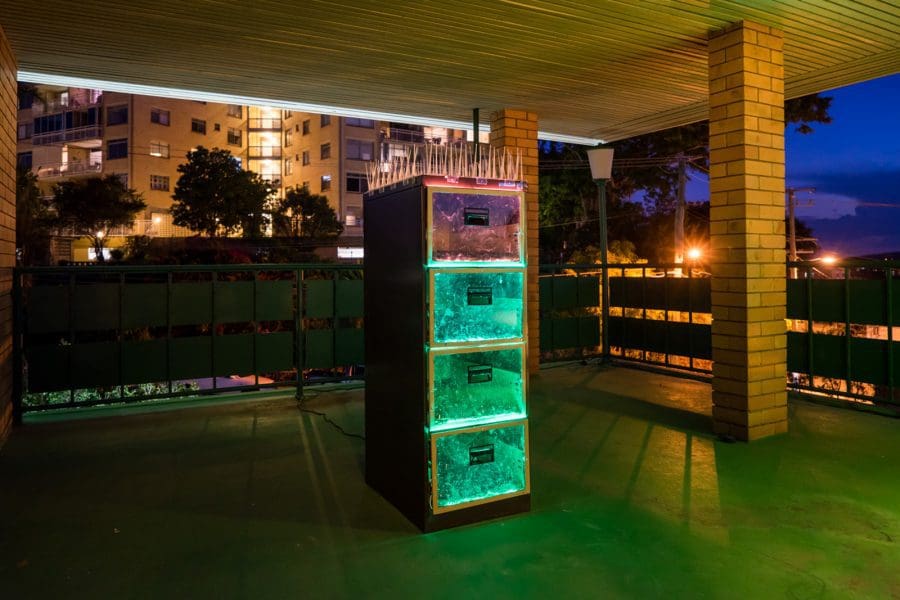
Place-driven Practice
Running for just two weeks across various locations in greater Walyalup, the Fremantle Biennale: Sanctuary, seeks to invite artists and audiences to engage with the built, natural and historic environment of the region.






Artists have always looked to influential ideas from art history to reinterpret and critique their own time and place. With this approach, the well-worn mode is stretched and given new life, and the artist’s specific surroundings are revealed in new colours.
The remarkable artworks of Brisbane-based Erika Scott bear this out. For example, take her use of aquariums (that is, domestic fish tanks), a long-time feature of her installations. Her new exhibition, The Dutch Aquarium, takes its name from a popular style of ‘freshwater aquascaping’ that developed in the 1930s, which involves the careful arrangement of an elaborate underwater garden.
“The Dutch style distinctively arranges plants with a focus on plant diversity, and combines vast arrays of leaf colour, plant size and texture into a single space,” says Scott. “I’m using the Dutch Aquarium because I feel it overlaps with my experiences of negotiating collage. It’s also nice to compare my ongoing use of highly artificial and decorative objects in art to nature. Aquariums have already featured in my art quite a bit, for their suggestion of viewing, artificial reality, feng shui and pet homicide.”
Scott’s exhibition sees aquariums arranged into a ‘caterpillar’ formation, with some even raised into arches that visitors can walk beneath. Scott will brown the water in the aquariums with driftwood, and the installation will be dimly lit with “two ceramic mushroom lamps I found on Gumtree”.
The local relevance emerges when you consider that many of the objects and materials that Scott sources hail from the streets, tips, garage sales and households of Brisbane. Scott refers to her practice of ‘kerb-siding’, and is defiant in stating, “I’m not shy if [the work] looks a bit more DIY than I’d hoped.” The Dutch Aquarium, therefore, takes on further resonance when you consider that this highly ornate and delicate form of underwater design has been juxtaposed with the dirt and grime of Brisbane, as well as the latent atmosphere of the city’s everyday life that lies hidden in these second-hand objects. This is, in many ways, a punk move.
There are also shades of Art Brut and Dadaism in Scott’s reliance on found objects: here is another way she appropriates and then reshapes significant artistic traditions, under the specific influence of Brisbane’s warmer weather, instantly recognisable architecture and community.

“I’ve always liked found objects—lamps, toys, back massagers and so on—and art gave me a safe place to collect and do all the things I like doing. But I’ve always had very specific preferences in relation to light, texture, colour and the weight of things. I’m working at building spaces and experiences that reflect what I value and find important.”
Scott’s values have been strongly informed by Brisbane’s rich and diverse tradition of Artist Run Initiatives (ARIs), many of which are based out of people’s homes—often the iconic ‘Queenslander’ houses that feature an under-house area perfect for art shows. She has actually run two ARIs herself— Accidentally Annie St and The Soylent Space— and there is a strong theoretical line to be drawn between the DIY ethic of ARIs and the rawness and experimentalism of Scott’s installations.
“Working in ARIs reminds you of how much you’re missing out on when not working with others,” she says, yet another reminder of the social and artistic cost of the coronavirus outbreak. “They show you all the funny everyday things that actually help you grow and maintain a practice. They allow you to experience the intimate workings of another’s process, and it’s empowering to learn that there are multiple art worlds and infinite ways to skin a cat.
“But for me, it feels like Queenslanders and domestic spaces still teeter between necessity and choice. While I’ve had a lot of fun working in these spaces and take them very seriously, they do have their limitations, particularly with renting and neighbours.
“While it’s empowering to have a strong ARI history and being geared to operate in autonomous ways, I think the fact that we’re reactivating these spaces also reflects that a lot of artist contributions still aren’t being taken seriously or given adequate support.”
However, at a time of increasing social isolation and uncertain cultural relations, Scott’s work is anathema to what often seems like unavoidable nihilism: in its positivity, inventiveness and vitality, it is born of a communal, collective spirit.
Please note that due to Covid-19 restrictions, Outer Space is temporarily closed. Please refer to their website for the latest information.